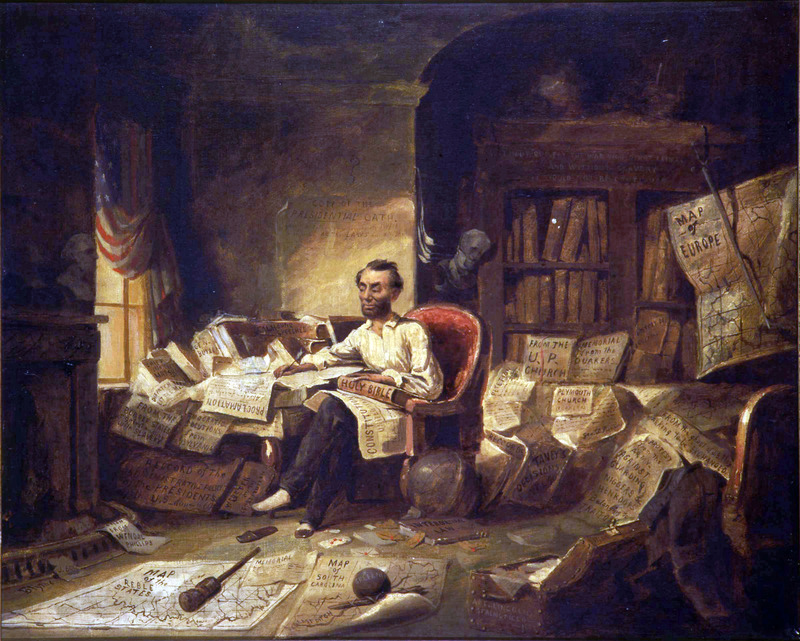Abraham Lincoln Writing the Emancipation Proclamation
 In contrast to the solemnity, realistic likenesses, and simple composition of Francis Bicknell Carpenter's 1864 painting The First Reading of the Emancipation Proclamation of Abraham Lincoln, David Gilmour Blythe's 1864 Abraham Lincoln Writing the Emancipation Proclamation was unusually disorderly, expressionistic, and cluttered with symbolism. A rumpled Lincoln, Bible and U.S. Constitution perched in his lap, scrawls out the the Proclamation amid an avalanche of Confederacy and European maps, pro- and anti-slavery documents, and the battered bust of previous president James Buchanan—virtually every inch of the canvas offers a message about the inspiration for the Emancipation Proclamation or the nature of opposition to it. The painting was adapted for a lithograph in 1864, but in its time Carpenter's painting seemed a more appropriate commemoration of the significant historical event; while that painting was widely reproduced and disseminated, neither Blythe's original work nor its prints were very popular.
In contrast to the solemnity, realistic likenesses, and simple composition of Francis Bicknell Carpenter's 1864 painting The First Reading of the Emancipation Proclamation of Abraham Lincoln, David Gilmour Blythe's 1864 Abraham Lincoln Writing the Emancipation Proclamation was unusually disorderly, expressionistic, and cluttered with symbolism. A rumpled Lincoln, Bible and U.S. Constitution perched in his lap, scrawls out the the Proclamation amid an avalanche of Confederacy and European maps, pro- and anti-slavery documents, and the battered bust of previous president James Buchanan—virtually every inch of the canvas offers a message about the inspiration for the Emancipation Proclamation or the nature of opposition to it. The painting was adapted for a lithograph in 1864, but in its time Carpenter's painting seemed a more appropriate commemoration of the significant historical event; while that painting was widely reproduced and disseminated, neither Blythe's original work nor its prints were very popular.URL: http://web.cmoa.org/files/2012/11/blythe2.jpg
Creator: David Gilmour Blythe
Source: Carnegie Museum of Art
Date: 1863
Rights: Carnegie Museum of Art



